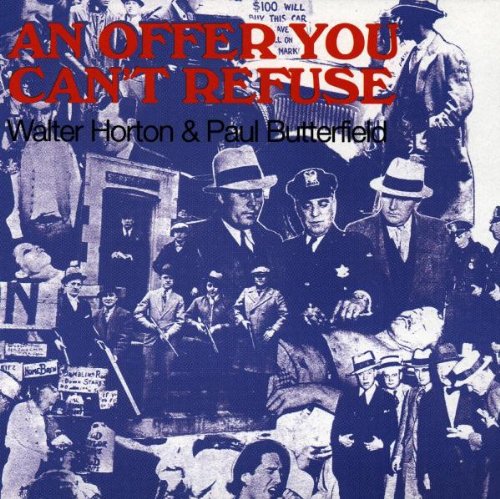 | |
| Tearing it up at Newport 1965 |
When I think about it now, it's a testament to musicianship of Butterfield, Bishop and Bloomfield. Remember, they are all in their early twenties in 1965, and yet, each had his own distinctive sound and approach to the interpretation of standard blues songs of the day. All this young talent floating on the seasoned Arnold, Lay rhythm section, what a combination! If you compare this incarnation of the Butterfield band with any of the young blues bands of the day, you can sense, they deserved to play the prestigious event.
 |
| Newport Folk Festival, July 1965 |
They weren't a headliner at Newport, but the
gig was an important foot in the door for all of them. Very few people outside Chicago had even heard of them, yet seen them perform live. So, playing Newport was a great opportunity to advertise their talent during a performance on opening night where festival patrons could see the band as they entered the grounds, and then again during two lengthy workshops over the weekend.
You can see in the photo below that the band was unknown enough that festival organizers placed them on a stage too small to accommodate the whole band. However, the much appreciated and deserved opportunities were thanks to the intuition and initiative of A & R man, Paul Rothschild. He was the one who boasted about his discovery to Albert Grossman, and Jac Holzman. It is his business connections in New York which should be given the credit for getting Butterfield the gig. However, with all that confidence came expectations, and that must have created a powerful pressure on the confidence of the band.
,+an+all-afternoon+affair+called+Bluesville.+The+band+was+filmed+by.jpg) |
| The Butterfield Band playing on opening night. |
During that weekend in 1965, the Butterfield Band introduced authentic electric Chicago blues to an enthusiastic audience. There are countless interviews with artists and audience members who still speak of the excitement the band created. While both Dylan and Butterfield occupy the history books because of their performances, it was pretty much serendipitous. Dylan wanted to perform an electric set, and there were no other electric musicians available to serve his purpose, so really, Paul’s band were the first and only choice.
 Unfortunately, a recording of the complete Butterfield set does not seem to be available anywhere.
Unfortunately, a recording of the complete Butterfield set does not seem to be available anywhere. Juke, the Little Walter hit instrumental, Blues for Ruth, (probably a tribute to Butterfield’s former girlfriend who died of cancer in the early sixties), Why Don’t You All Quit It, Elvin’s Blues, But That’s Alright (Nick Gravenites of vocals), It’s Time About Time (Nick on vocals) , and The Cannonball Adderley instrumental Work Song. None of these performances seem to have made it to commercial release. If you ever come across them, please let me know.
The original set list included:
However, the Newport version of Born in Chicago, Look Over Yonder's Wall, Blues With A Feelin’ and Mellow Down Easy show up on a few Newport and Butterfield compilations as do the Dylan/Butterfield Band tracks: Maggie’s Farm, Like a Rollin’ Stone, with Al Kooper on organ. (Mark Naftalin had not joined the band yet.)
There is another factor to consider when you listen to performances that are available. Contrary to what many critics of Butterfield have asserted, his band was doing their own arrangements of the standards, they weren't just "aping" the originals. For example, Blues with a Feeling, Look Over Yonders Wall, and Mellow Down Easy are easily distinguished from other versions with journeymen Little Walter and Elmore James. Even Butterfield's version of Juke has a different tone and tempo to Little Walter's.
As a little piece of Butterfield trivia, in addition to introducing electric blues played at rock tempo to the largely acoustic folk world, Butterfield also holds a unique title in the history of a generation's popular music. He is the only artist to play all the important concerts of an era: Newport 1965, Monterey 1967, Woodstock 1969, and then the Last Waltz 1975.
Personally, I've never been a big fan of the Newport recordings. It's probably because I was spoiled by the energy conveyed by the first album versions. Still, the available Newport set is pretty good in sound quality and performance. Most of all, I wish I had been there that weekend in July of 1965
Have a look at the video below. It is a clip from Murray Lerner's Festival and shows Butterfield playing Juke














.jpg)


